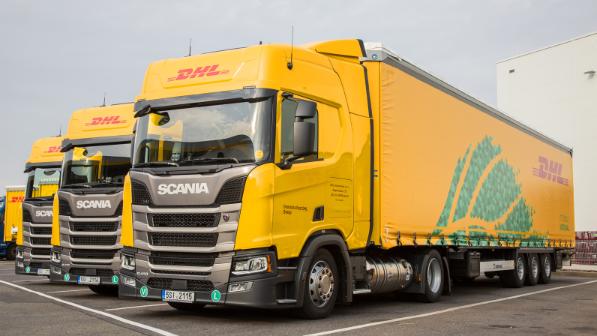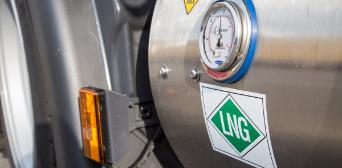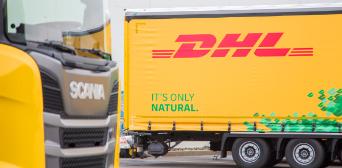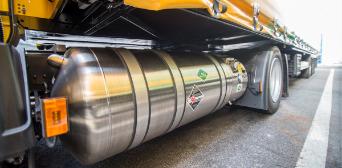NEW DHL TRUCKS RUN ON LIQUEFIED NATURAL GAS IN AN ENVIRONMENTALLY FRIENDLY WAY
Press Release: Prague, October 22, 2020

- Three LNG units transport parts for the manufacture of cars to Germany
- LNG drive enables reduction of CO2 emissions by up to 15 percent
- The next step towards achieving the "zero emissions" target by 2050
DHL Supply Chain continues to reduce emissions consistently. Since October, the DHL Supply Chain fleet has grown with three new tractors running on liquified natural gas (LNG). While maintaining cost-effectiveness, CO2 emissions will be reduced by 51 tonnes per year. More low-emission vehicles will follow.
“We are very pleased to have implemented another initiative under Deutsche Post DHL Groups Go Green environmental program, which aims to achieve the ambitious goal of zero carbon dioxide emissions by 2050,” says Kateřina Rázlová, Director of the Automotive Division at DHL Supply Chain. “Three modern liquefied natural gas tractors are designed for the transport of components from the crossdock in Nepřevázka to the German production plants of our client from the automotive industry,” adds Kateřina Rázlová.
The new units in DHL Supply Chain colors consist of Scania R 410 tractors in the “low deck” version, which allows the use of semitrailers with a three-meter internal height of the cargo space. “This was one of our conditions, because this type of semi-trailer is essential for the efficient transport of automotive parts. At the same time, we are reducing the number of trucks in road traffic,” explains Kateřina Rázlová.
The parts are loaded into mega semi-trailers in unified stackable pallets and optimized packaging, which allows complete use of cargo space. For Scania LNG tractor drivers, the 13-liter six-cylinder delivers a maximum output of 410 hp and a maximum torque of 2000 N.m. The performance parameters are thus comparable to diesel units. In contrast, the liquefied natural gas engine runs quieter and emits up to 15% less CO2 emissions. The first of the three units will cover 160,000 km per year in DHL's service, while the other two trucks are expected to cover 260,000 kilometers per year.
„We use the trucks on routes to Germany, because here we face a suitable infrastructure to run them and by route planning we are not facing any issues with fuel supply. In any case, this is the first step towards the gradual expansion of the fleet with LNG vehicles,” adds Kateřina Rázlová. DHL Supply Chain has been operating also Scania 410 CNG tractors powered by compressed natural gas since the end of last year, which reduces emissions by 15 percent.


